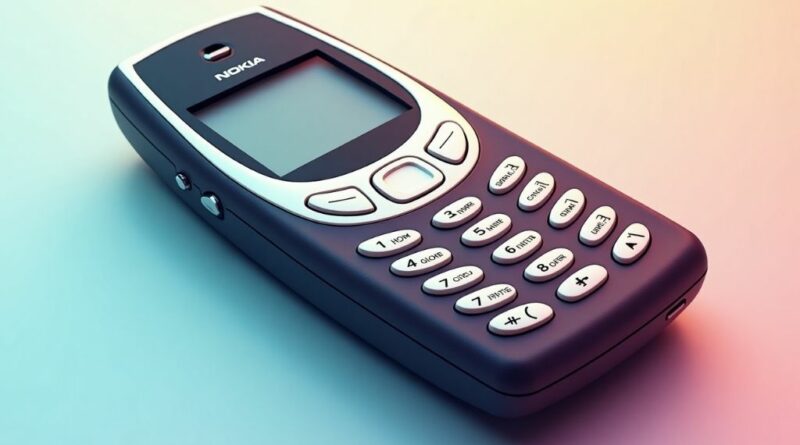The Nokia 1100: The World’s Best-Selling Mobile Phone
Article courtesy: SoftpageCMS.com
In an age where smartphones have become increasingly sophisticated, with folding screens and artificial intelligence capabilities, it’s worth remembering that the most successful mobile phone in history remains the humble Nokia 1100. Launched in 2003, this unassuming device has sold over 250 million units worldwide, securing its place as the best-selling mobile handset of all time. Its phenomenal success tells a fascinating story about technology, accessibility, and the evolving relationship between people and their mobile devices.
The Revolutionary Simplicity of the Nokia 1100
The Nokia 1100 wasn’t designed to revolutionise technology—it was created to democratise it. In the early 2000s, when mobile phones were rapidly evolving, Nokia took a different approach with the 1100. Rather than adding features, they focused on perfecting the essentials: durability, reliability, and affordability.
This monochrome-display device featured a dust-resistant keypad, an anti-slip side grip, and a built-in torch—practical features that addressed real-world needs rather than technological showmanship. The phone’s intentionally minimalist design made it accessible to users across diverse backgrounds, including those with limited technological experience.
Unmatched Durability and Battery Performance
Perhaps the most legendary aspect of the Nokia 1100 was its nearly indestructible nature. While modern smartphone durability tests often reveal concerning fragility, the Nokia 1100 gained fame for surviving drops, water exposure, and extreme temperatures with remarkable resilience.
The phone’s battery performance was equally impressive, offering up to two weeks of standby time on a single charge. In regions with unreliable electricity access, this feature wasn’t merely convenient—it was essential. Today’s power banks and battery-saving applications attempt to address similar needs, but few modern devices can match the 1100’s energy efficiency.
Global Impact and Digital Inclusion
The Nokia 1100’s greatest achievement was bringing mobile communication to previously unconnected populations. With a price point of approximately $20 USD at launch, it made digital connectivity accessible across developing economies. In rural communities throughout Africa, Asia, and South America, the Nokia 1100 often represented a family’s first entry into the digital world.
This accessibility had profound economic implications. Mobile banking, information access, and communication networks developed around these devices, creating new opportunities for commerce and education. The mobile revolution in emerging markets that we now take for granted was built on the foundation of affordable, reliable handsets like the Nokia 1100.
Cultural Legacy and Nostalgic Revival
The Nokia 1100 transcended its utilitarian purpose to become a cultural icon. Its distinctive ringtones and the addictive “Snake” game created shared experiences across continents and cultures. Today, the phone enjoys a nostalgic revival as part of the wider tech nostalgia movement, with vintage Nokia handsets becoming collectibles.
HMD Global, the current manufacturer of Nokia-branded phones, has recognised this emotional connection by releasing modernised versions of classic Nokia models. While these new devices incorporate contemporary features, they deliberately evoke the simplicity and reliability that made the originals so beloved.
Lessons for Modern Technology Design
The enduring legacy of the Nokia 1100 offers valuable insights for today’s technology designers. In an era of planned obsolescence and feature bloat, the 1100’s success demonstrates the value of purpose-driven design focused on reliability and accessibility.
As concerns about electronic waste and technological sustainability grow, the Nokia 1100’s lengthy operational lifespan and minimal resource requirements stand as a reminder that technological progress isn’t always about adding complexity.
Conclusion
The Nokia 1100’s record-breaking sales figures tell only part of its story. Beyond commercial success, this iconic device democratised mobile communication, proving that thoughtful design addressing fundamental human needs can create technology with truly global impact. In today’s rapidly evolving technological landscape, the humble Nokia 1100 reminds us that sometimes, less truly is more.
As we continue into an era of increasingly sophisticated mobile technology, the principles that made the Nokia 1100 successful—durability, accessibility, and purposeful design—remain as relevant as ever. Perhaps the most successful phone ever made still has lessons to teach us about what technology can and should be.
We’d love your questions or comments on today’s topic!
For more articles like this one, click here.
Thought for the day:
“Technology has solved old economic problems by giving us new psychological problems. The internet has not just open-sourced information; it has also open-sourced insecurity, self-doubt, and shame.” Mark Manson



